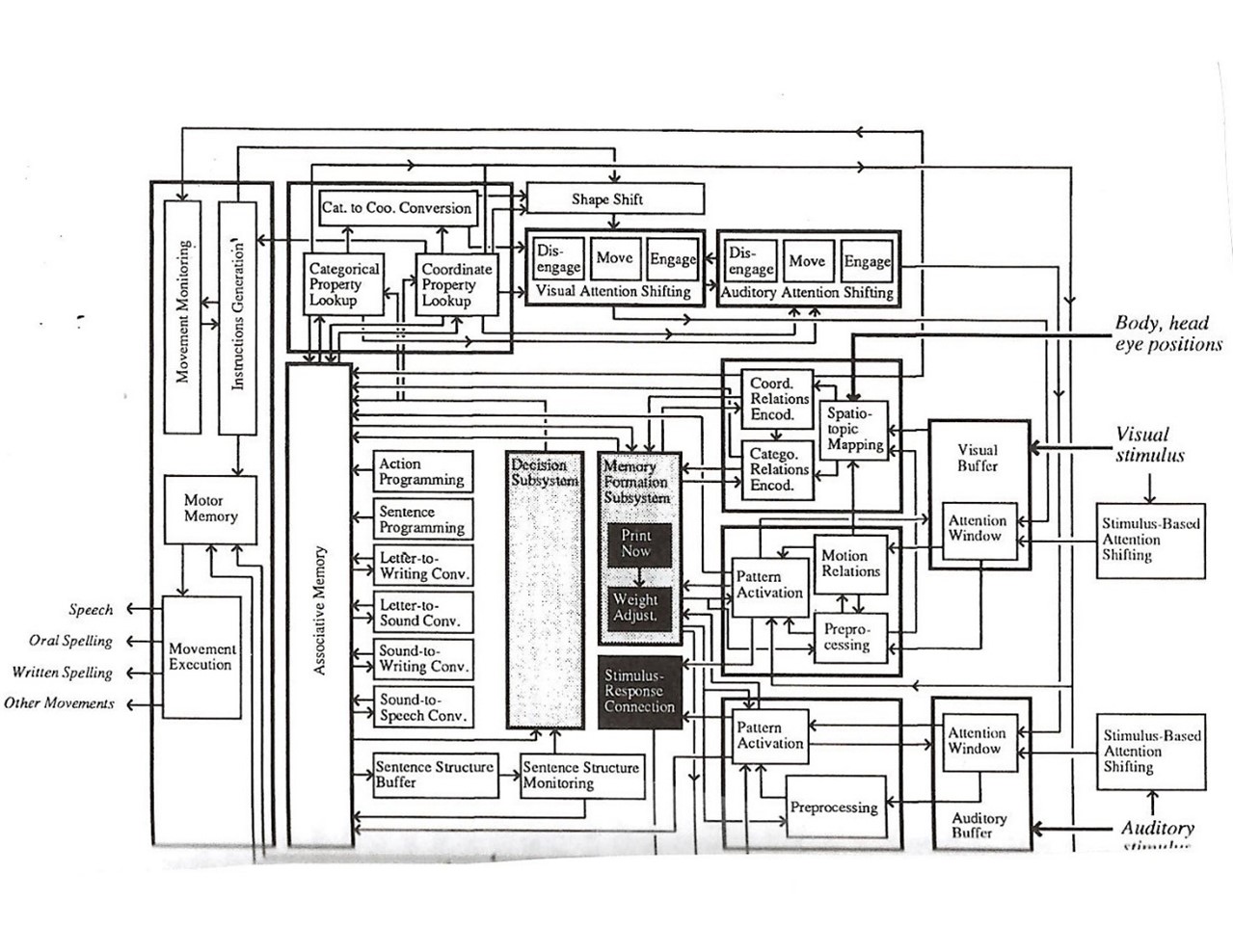
With this theory of mind came a dramatic move away from the assumption that memories are preserved in specific cells or packets (called “engrams”). Instead of individual neurons storying complex information, there are neural networks that integrate information contained in multiple cells. We discover that cell assemblies (forming networks) come together in various ways to create integrated images of sight, sound, taste, smell, etc. that we call memories. As Stephen Kosslyn and Olivier Koenig (1992, pp.46-47) noted in their comprehensive portrayal of neural functioning this integration includes what they call “constrain satisfaction” meaning that the brain can not only integrate stimuli from several sources, but also integrate stimuli that are coming in from a single source but are initially processed selectively by specific neurons (e.g. color and orientation of a visual stimulus).
This integrative function is particularly important to note because it operates in full force when we are forging a memory. Individual neurons will hook up with many other neurons to form an integrated cluster of images from many sources that form the memory. Furthermore, individual neurons link with many other neurons to create many different memories—they aren’t assigned to one specifically memory. Once formed, the memories settle into short-term storage and eventually are either discarded or synthesized and combined with other memories to be housed in the hippocampus.
Kosslyn and Koenig (1992) also write about the proactive nature of networks that are formed. A “feedforward” function is served by the neural networks which enable us to move forward from the reception and interpretation of external stimuli (input) to the hidden transmission of integrated stimuli (now becoming information) across and to different domains of the brain, and finally to the processing and use of this information (output). A “feedbackward” function is now being served as the output produces information back to other domains of the brain – what Kosslyn and Koenig identify as taking place through “recurrent networks.”
I should also provide an obvious point: memories do not exist in isolation. They are intricated interwoven with many other functions being services by the brain. Kosslyn and Koenig (1992, p. 352) even provide us with a highly complex map that portrays the way in which memories interact with other neural operations.
This truly is an amazing map that clearly pays homage to the complex nature of the human mind!
Download Article 1K Club




















